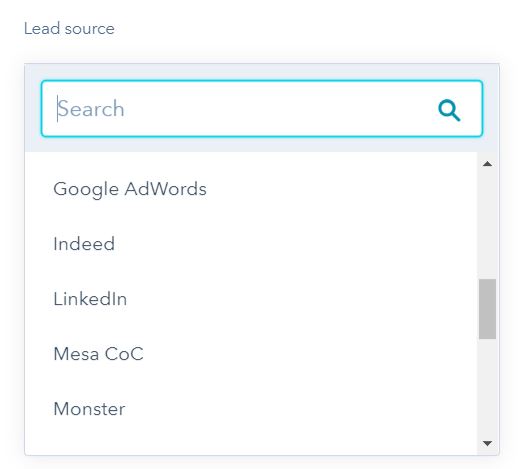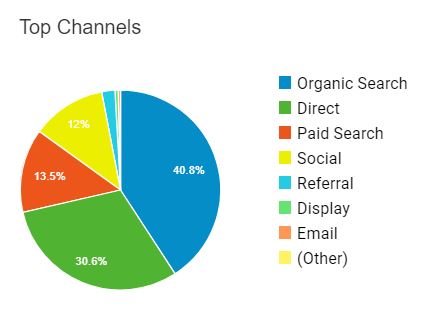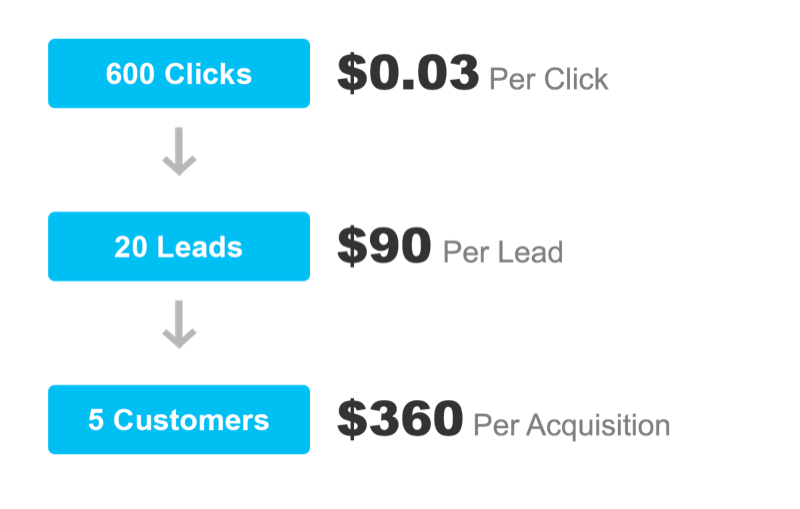Every time you get a new lead, it opens the door for more revenue, and that’s a good thing, right? But do you know where those leads are coming from? What attracted them to reach out to you? How much it actually COST you to get that lead? To effectively grow your business, and to attract the right leads for your business at the right cost level, you need to know what leads came from where. We’ll cover a few basic ways for small business owners to track where your leads are coming from, so you can get a better handle on lead flow overall.
Why you should care about where leads are coming from
If you’re a savvy marketer, or if you’re working with a small business marketing company that is handling your marketing for you, you’re likely marketing in several different ways, including:
- Social media which may include
- Alignable
- Email marketing
- Blogging
- Paid advertising
- Referrals
- Press release
- Video marketing
- Speaking engagements
- Direct mail
- Print advertising
And that’s just a few options! For any of the above, at the very least, you’re spending your already overtaxed time to do these marketing efforts. For some, you’re paying to use the platform, place an ad, send an email, or perhaps creating a marketing piece such as a video or direct mailer. How do you know which marketing tactics brought in leads? Better yet, are they good leads that turn into business, and was the cost of the marketing effort worth the lead value? All good questions, and ones you should have answers to. If you’re paying too much for a lead, or if those leads are not valuable to your small business, you need to know how to adjust your marketing efforts accordingly.
Track Where Your Leads Are Coming From through a basic CRM

- Contact name
- Company name
- Phone
- Lead source
“Lead source” is what we want to talk about. When a lead comes to you, it’s important to know how they found your company when they finally decided to reach out to you. What was the last marketing outreach that led them to email, call, or fill out a lead form on your website? There are ways to track it, which we’ll get to in a minute, but the most basic way is to ASK. While this may not be the most accurate, it will help you get an idea of how they found you. Keep in mind that the average customer will finally respond after 5-7 touchpoints. Touchpoints could be social media messages, an email, a blog, a radio commercial, etc. They may have been receiving your last 4 emails, read 2 posts on social media, but finally pulled the trigger when they watched your how-to video on YouTube. For the sake of tracking leads, you want to credit that new lead to video marketing. HubSpot, as an example (and most CRMs are very similar) will allow you to customize lead sources so you can track when a new lead comes in and where they came from.
Let’s say you got a new lead from Google AdWords (now called Google Ads). If you know how much you spend per month on Google Ads, and how many leads you received, you can take the cost of your ads, divide it by the number of leads you received, and that is your cost per lead (CPL). Perhaps another 10 leads came from LinkedIn and over the course of that month, you paid a marketing person $200 to manage your LinkedIn activities for you. Again, you can quickly see how much you spend on leads (CPL), and if they’re worth it.
Other ways to track leads

Google Analytics also allows you to see how your site acquired traffic by channels which include:
- Direct
- Social media
- Referral traffic
- Organic search
- Affiliates
- Paid search
- Display
- Other advertising
Though it won’t give you the information by lead, you can easily see in general what marketing tactics seem to at least by driving traffic to your site; a good start in understanding where leads are coming from and how well they convert.
Understanding quality vs. quantity of leads
Anyone who runs a small business knows more leads is not better. Better leads are better! No one wants to chase down leads that aren’t a good match for your business. You may, for example, get lots of leads from Pinterest, which you may spend 10 hours a month working on, and get numerous inquiries, but none convert into a sale. You may, on the other hand, spend 10 hours a month blogging, get four leads, and two convert. Where was your time better spent? Without lead tracking, you really have no way to know!
Understanding your quality of leads comes from which leads turn into business. Knowing your cost per leads is a very good start, but to really get a good idea of how your marketing efforts are paying out, you need to understand cost per acquisition (CPA): how much did it cost you to get that sale? Here’s a great explanation and illustration by Convert:
Cost Per Lead (CPL) is the dollar amount in clicks it takes to generate a lead. Cost Per Acquisition (CPA) is the cost to generate a customer.
Start with basic tracking to get an initial idea of lead sources
If you don’t have a marketing consultant to help you track leads, start basics to track where your leads are coming from. First, look at your analytics to see what channels are referring traffic to your site. Traffic doesn’t equate to leads of course, but if you’re spending a significant amount of time on Twitter, and not getting traffic let alone leads, either your message is wrong, or Twitter is not the best use of your marketing time. Second, get a basic CRM set up. A CRM is an important tool in helping you not only manage your sales efforts, but track the effectiveness of your marketing as well. Third, ASK your new leads how they found you! Even having a basic handle on where your leads come from and how well they convert puts you way ahead of the game!
Understanding how to track where your leads are coming from will help you become a more effective marketer, help you close more deals, and ultimately grow your business.
- Marketing Tactics That Your Small Business Can Do for Free - January 10, 2024
- How to Create Images for Your Small Business Website - December 6, 2023
- How Small Businesses Benefit from Referrals - November 6, 2023






